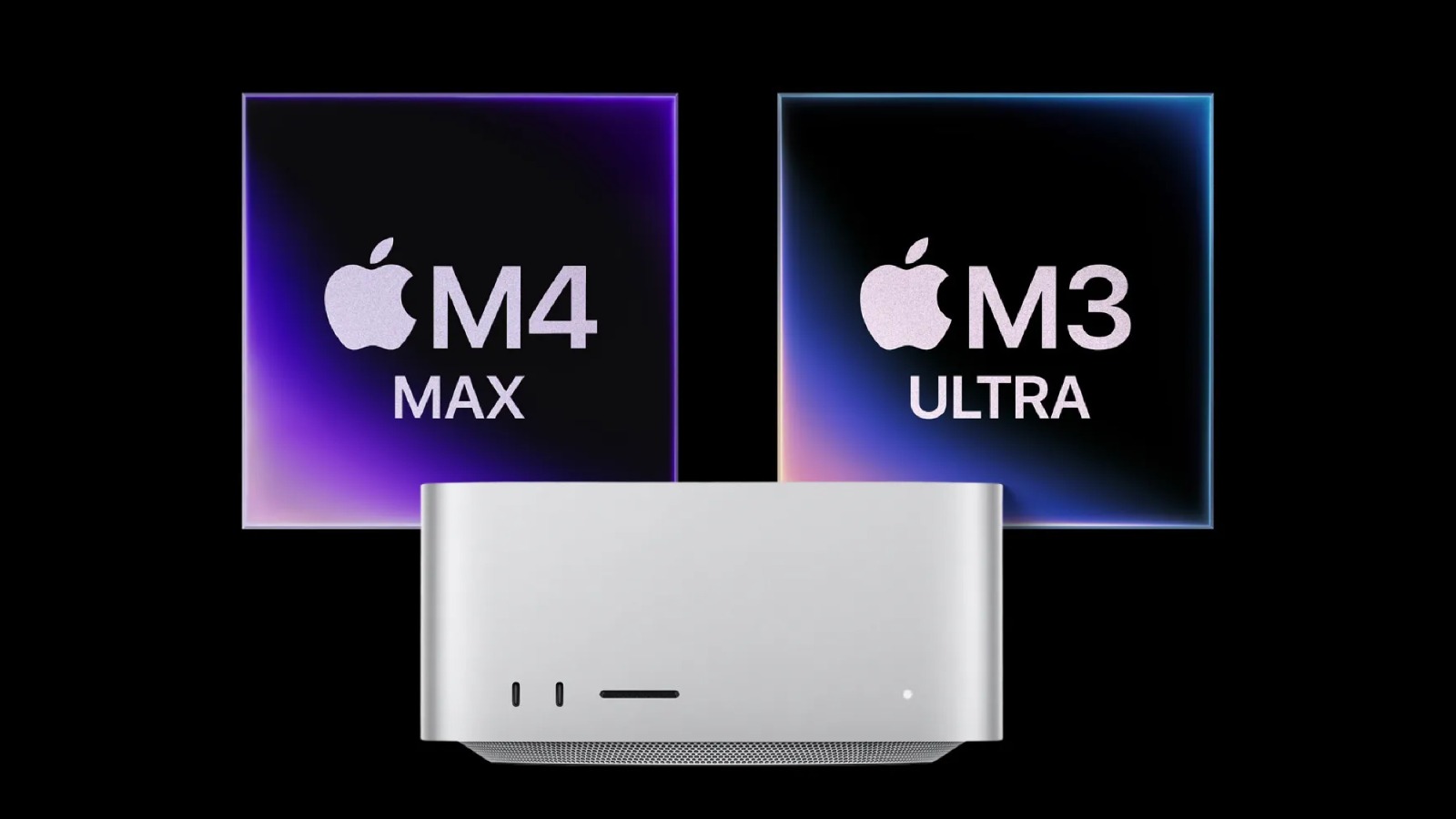
On March 6, 2025, Apple released Mac Studio with M3 Ultra chips. This high performance desktop has been designed for the professionals with demanding workflows. It has an ultra-powerful processor, advanced cooling system and integration with macOS Sonoma. In this blog we will overview the product and explore its performance, thermal efficiency, workflow potential and expansion capabilities.
Performance and Benchmarking of Mac Studio M3 Ultra
CPU Performance Improvements
Benchmark analyses indicate that the M3 Ultra delivers a substantial boost in processing power. According to Geekbench 6 results, the M3 Ultra achieves a single-core score of 3,221 and a multi-core score of 27,749. In comparison, the M2 Ultra scores 2,777 in single-core and 21,351 in multi-core tests. This translates to approximately a 16% increase in single core performance and a notable 30% enhancement in multi-core performance with the M3 Ultra.
GPU Performance Enhancements
The M3 Ultra also brings significant advancements in graphics processing. In Metal GPU benchmarking, the M2 Ultra scored 221,824, whereas the M3 Ultra achieved 259,668, marking a 17% improvement.
This enhancement is particularly beneficial for tasks requiring intensive graphics processing, such as 3D rendering and complex visual effects.
Direct Upgrade Comparison: M3 Ultra vs M2 Ultra
For professionals considering an upgrade from the M2 Ultra to the M3 Ultra, the performance gains are substantial. The M3 Ultra’s enhanced CPU and GPU capabilities result in faster processing times, improved multitasking, and a more efficient workflow. These improvements are especially valuable for users engaged in high-demand computational tasks, including video editing, 3D modeling, and data analysis.
Generational Highlights of the Mac Studio M3 Ultra
The transition from M2 Ultra to M3 Ultra in the Mac Studio lineup underscores Apple’s commitment to delivering cutting-edge performance. The M3 Ultra’s architecture not only boosts processing speeds but also enhances energy efficiency, contributing to a more sustainable computing environment. Additionally, the increased memory bandwidth and support for larger unified memory configurations allow for smoother handling of large datasets and complex applications.
Thermal Management of Apple Mac Studio M3 Ultra
The M3 Ultra chip packs a massive number of transistors and CPU/GPU cores, pushing computing limits for creative workflows like video editing, 3D rendering, and data science. This level of performance naturally generates significant heat, necessitating an efficient thermal solution.
Apple employs a sophisticated approach to thermal management in the Mac Studio M3 Ultra, combining passive and active cooling technologies to maintain optimal performance while ensuring quiet operation.
Heat Dissipation & Fan Design
Passive Cooling: Aluminum Chassis & Thermal Conductivity
One of the key elements of Apple’s thermal management approach is its passive cooling system. The Mac Studio’s aluminum enclosure is designed to function as a heat sink, dissipating heat efficiently. The metal chassis allows heat to spread evenly, reducing the risk of localized overheating.
Apple also integrates thermal paste and heat spreaders to transfer heat away from the M3 Ultra chip. These components work in tandem with the passive cooling elements to reduce thermal bottlenecks.
Active Cooling: Dual Fan System & Airflow Optimization
Despite an efficient passive cooling design, active cooling is essential to ensure the M3 Ultra can sustain peak performance for extended periods. The Mac Studio M3 Ultra features a dual-fan system, which plays a critical role in maintaining stable temperatures. The fans are engineered to maximize airflow while minimizing noise.
- Large Heat Sink: The internal cooling system includes a large heat sink, which absorbs and distributes heat effectively.
- High-Efficiency Fans: The fans pull in cool air from the bottom of the Mac Studio and expel hot air through precisely engineered exhaust vents at the back.
- Smart Fan Control: Apple’s thermal algorithms dynamically adjust fan speeds based on workload intensity, ensuring efficient cooling without excessive noise.
Why Efficient Cooling is Crucial for Sustained Performance?
Thermal throttling is a major concern in high-performance computing. When a processor overheats, it automatically reduces clock speeds to prevent damage, leading to performance drops. Apple’s advanced cooling strategy ensures that the Mac Studio M3 Ultra can maintain high performance over extended workloads, making it ideal for tasks like:
- 4K & 8K Video Editing: Keeping temperatures in check ensures smooth playback and rendering.
- 3D Modeling & Animation: Computational loads remain stable, preventing slowdowns.
- Machine Learning & Data Science: Continuous high-speed processing without interruptions.
Apple’s Passive Cooling vs Active Fan System
Apple has traditionally relied on passive cooling in many of its Mac devices, particularly in fanless MacBooks with M-series chips. However, for the Mac Studio M3 Ultra, Apple adopts a hybrid approach that combines passive cooling with a highly efficient active cooling system.
| Features | Passive Cooling (MacBooks, Mac Mini) | Active Cooling (Mac Studio M3 Ultra) |
| Cooling method | Heat dissipation through alumni chassis. | Dual-fan system with large heat sink. |
| Performance impact | Ideal for low-power, energy-efficient tasks. | Enable sustained high performance. |
| Noise level | Completely silent. | Ultra-quiet but with controlled fan noise. |
| Thermal Throttling | More likely under heavy workloads. | Minimized due to active cooling. |
Related links you may find interesting
Software Optimization of Mac Studio M3 Ultra
AI & ML Performance
With macOS Sonoma, Apple has enhanced AI and ML capabilities in ways that significantly impact both casual users and professionals. Key improvements include:
On-Device AI Processing
- The M3 Ultra’s Neural Engine accelerates AI tasks natively on the Mac, reducing the need for cloud-based processing.
- Privacy-focused design ensures that AI tasks, such as facial recognition, text predictions, and intelligent automation, remain secure and local.
Optimized Performance for Pro Apps
- Applications like Final Cut Pro, Logic Pro, and Adobe Creative Suite take full advantage of the Neural Engine for real-time AI-powered features such as noise reduction, object tracking, and intelligent audio enhancements.
- Machine learning-powered upscaling in video and image editing enhances resolution without loss of quality.
Enhanced Productivity with AI
- macOS Sonoma’s AI-driven capabilities include improved voice recognition for Siri, better text-to-speech conversions, and enhanced dictation accuracy.
- Smart automation features, like AI-assisted summarization in Notes and Mail, help streamline workflows.
Tied to Apple’s Ecosystem: Seamless AI Integration
One of the key strengths of Apple’s software optimization is its tight ecosystem integration. The M3 Ultra’s AI capabilities seamlessly work across Apple’s devices and services, providing a fluid user experience:
- Universal Control & Handoff:- AI-powered continuity features allow users to switch between Mac, iPad, and iPhone effortlessly.
- iCloud AI Enhancements:- Advanced AI models improve image recognition in Photos, suggest smarter search results, and categorize emails and messages more intuitively.
- Apple Silicon Optimization:- Unlike traditional AI processors that rely on external software optimization, macOS Sonoma is natively designed to extract the best AI performance from M3 Ultra.
macOS-Specific AI Features
macOS Sonoma introduces several macOS-specific AI-driven features that leverage the power of the M3 Ultra, including:
- Intelligent Live Wallpapers: Dynamic, AI-enhanced wallpapers that adjust to ambient lighting and user preferences.
- AI-Boosted Safari: Enhanced browsing capabilities, including smart tab organization, intelligent content filtering, and improved ad blocking.
- Personalized Widgets: AI-driven widgets that adapt based on usage patterns, showing relevant reminders, weather updates, and recommended actions.
- Live Captions & Real-Time Translation: Improved accessibility with real-time captions for videos and calls, powered by the Neural Engine.
- Pro Motion for AI Content Generation: AI-assisted content creation in apps like Pages, Keynote, and Final Cut Pro accelerates workflow and enhances creativity.
Conclusion
The Apple Mac Studio (M3 Ultra) is an absolute powerhouse, perfect for professionals in 3D rendering, video production, and AI-driven applications. With cutting-edge cooling, software optimizations, and next-gen performance, it sets a new standard for compact, high-performance workstations.





